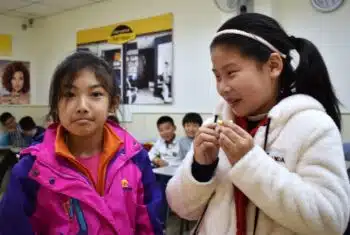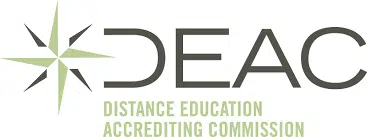When I moved to Shanghai at 23, I had a Bachelor’s degree, an Honours degree, and a 120-hour TEFL certificate from The TEFL Academy. While I had some experience teaching university-level tutorials and supplementary lectures, I didn’t have much experience teaching children, especially not in a classroom setting.I arrived in Shanghai in August 2017 and stayed for two years. I had always wanted to live abroad, and Shanghai stood out as a vibrant, international city full of opportunities. It felt like a natural choice.
Teaching In A Language School VS A Bilingual School In China: A Q&A
Join a global community of over 200,000 TEFL teachers working throughout the world! Enrol me!
Known as the Land of Dragons, China’s global influence is undeniable. As the country continues to expand its presence on the world stage, English remains a priority for locals.
For TEFL teachers, this means no shortage of job options, but it also means making some tough choices, like whether to work in the public or private schools (language centres, bilingual schools and international school).
Private schools in China offer a fast-paced alternative to public schools, providing hands-on classroom experience for TEFL teachers seeking flexibility and rapid skills development.
Read more: Teach English in China
Inge is a South African TTA alum who taught in a language centre and a bilingual school in Shanghai, China.

Looking back, it was absolutely the right one. It’s a city full of contrasts and energy, and it became a second home to me.
Read more: Teach English in Shanghai
Getting a TEFL job in Shanghai
What was the hiring process like?
The hiring process was fairly straightforward. I applied through a TEFL recruitment agency that helped connect me with a school in Shanghai. They arranged the initial interview, and after that, most of the communication was directly with the school.
Once I was offered the position, the school guided me through the visa and document preparation process. There was quite a bit of paperwork involved including:
- applying for a police clearance certificate,
- getting my degree authenticated, and
- applying for a Z visa.
The process required patience and attention to detail, but the school was helpful and made sure I had everything I needed.
Read more: How To Legalise Your TEFL Certificate [2025]
When I arrived in Shanghai, I completed two weeks of training before starting to teach independently.
- The first week took place at the head office and focused on theory, classroom management techniques, and lesson planning.
- The second week involved shadowing an experienced teacher, who acted as a mentor.
That part of the training helped a lot. Seeing how a real class was run and having the chance to ask questions made a big difference. It gave me a clearer idea of what to expect and made me feel much more prepared.
Overall, the process was manageable, especially with the support provided.
Teaching in Shanghai as a foreign teacher
What were your experiences TEFL teaching in Shanghai?
Year 1
In my first year, I worked at a private language centre that focused on after-school and weekend classes for children of different ages. It was a dynamic environment that kept me on my toes.
I usually worked five days a week, including weekends, with Mondays and Tuesdays off.
Weekday shifts ran from around 2 pm to 9 pm, and weekend from 8 am to 4 pm.
Most lessons were in the afternoons and evenings, and I taught a wide range of ages, from toddlers to pre-teens.
Read more: What’s The Difference Between Teaching Teenagers Vs Young Learners?
Starting at a language centre turned out to be a great entry point. It gave me valuable classroom experience.
I found that many more traditional schools are hesitant to hire teachers who lack a formal teaching qualification or who don’t already have hands-on experience with Young Learners.
The centre provided good support and training, and I was able to build confidence in a more controlled environment before moving into a more traditional school setting.
Year 2
In my second year, I moved to a bilingual primary school where I had a more regular Monday-to-Friday schedule. That role suited me much better.
I had my own dedicated homeroom class, which meant I got to know the students really well and could build meaningful relationships with them over time.
The connection I had with that class was something very special, and I still miss those kids today.
Year 1 vs Year 2
Both jobs provided a curriculum and teaching materials, so I wasn’t starting from scratch. However, the teaching style and expectations were very different.
The language centre felt more like a high-energy performance, especially with the very Young Learners, while the primary school allowed for deeper engagement and more structured learning.
That second year was when I really started to feel like a teacher.
Read more: Effective Approaches To Teaching Young Learners Who Don’t Speak The Language
Hours and workload for TEFL teachers in China
What did a typical day look like?
My daily routine depended a lot on the type of school I was working at.
During my first year at the language centre, the schedule was quite different from what most people would consider “normal” working hours.
My schedule followed an afternoon-to-evening model on weekdays and full days on weekends, which was typical for that setting. We typically had around two hours to prepare lessons and mark student workbooks before classes started.
The classes were short and fast-paced, and I often had to shift and adapt quickly between age groups. One class might be full of energetic five-year-olds, and the next could be older students preparing for English proficiency tests.
The pace was intense, but the environment was well-structured. We were provided with a curriculum and teaching resources, but we had to write our own lesson plans.
That was quite daunting at first, especially since I was new to teaching children. With time, though, I got into a rhythm, and writing lessons became second nature.
In my second year, at the bilingual primary school, my days became more routine.
I worked Monday to Friday, with regular school hours and breaks and was assigned a homeroom class, so I saw the same group of learners every day. This allowed me to build stronger relationships with them and that sense of continuity deepened my teaching experience.
Read more: 5 Tips For Building Rapport In The EFL Classroom
Apart from classroom teaching, I also got involved in school events.
We hosted a Christmas concert, a Halloween celebration, and a sports day, all of which were a lot of fun and added a festive energy to the school environment. It felt more like being part of a real school community, and I loved that.
Language schools vs bilingual schools
Are there any perks to working in a language academy versus a private school?
Language academies
Language academies had less traditional hours, which sometimes meant getting home late in the evenings, especially if you had a long commute home like I did.
Working over weekends can mean missing out on social events happening around the city.
That kind of schedule wouldn’t suit everyone, but it does give you time to run errands during the week when everything is quieter.
The work itself was more fast-paced, and I taught multiple age groups, often switching between classes throughout the day. It was a good way to gain a lot of teaching experience quickly, and I think it’s a great entry point if you’re new to classroom teaching.
Sometimes I was the only foreign teacher at my branch of the language centre, which could feel isolating at times.
While the local staff were welcoming and supportive, there were moments when I missed having colleagues who shared a similar background or perspective.
Bilingual schools
The bilingual school, on the other hand, followed a more standard school timetable with weekdays only, regular hours, and longer holidays that aligned with the local school calendar.
That routine helped me maintain a better work-life balance, allowed more time to travel and explore, and the environment felt more like a traditional school.
I had more time with the same group of students, which made it easier to build meaningful connections and follow their progress closely.
There was also a much larger team of around 15 foreign teachers at the bilingual school, which made the role more social and enjoyable. I made great friends and we formed a close-knit community. We celebrated Christmas and other holidays together, and over time, we became like a family away from home.
If we look at a salary comparison between the language school and the bilingual school, both positions were fairly comparable for someone starting out, but the bilingual school did offer more paid holidays, which I really appreciated.
One notable difference was that the salary at the bilingual school was often negotiated individually. This created some discomfort, as it became clear that teachers with similar experience and qualifications were sometimes paid quite differently.
As far as resources and facilities go, both schools were well-equipped. I always had access to teaching materials, technology, and classroom supplies.
In short, language centres can offer quicker entry and diverse experience, while bilingual schools tend to provide more stability and deeper classroom relationships. Both have their perks depending on what stage of your teaching journey you’re in.
Challenges of teaching in China
What should new ESL teachers know about working in China’s private education sector?
Teaching in China’s private education sector was incredibly rewarding, but it also came with a steep learning curve, especially in the beginning.
At first, I felt like I was figuring things out on the fly.
Lesson planning took a lot of mental energy, and teaching the very Young Learners was particularly challenging.
Some of the children were as young as two or three, and it wasn’t uncommon for a student to fall asleep in their chair or cry for their parents during a lesson.
In those early days, it sometimes felt more like babysitting than teaching.
There were also unexpected cultural differences that took some adjusting to.
Hygiene expectations were different from what I was used to. For example, many of the children had blackened baby teeth that weren’t brushed, because it was seen as unnecessary since those teeth would fall out anyway.
Discipline styles, classroom behaviour, and attitudes toward academic performance were all things I had to reframe in my mind.
The pressure Young Learners faced to excel was sometimes surprising. It took time to understand the strong emphasis placed on academic achievement.
Read more: Things To Know About Chinese Classroom Culture
At the language centre, I had the support of a Chinese co-teacher for the younger students, which helped a lot with communication and classroom management.
At the bilingual school, the students mostly spoke English fluently, so language was less of a barrier.
Even outside the classroom, though, it was important to be flexible. Some taxi drivers refused to pick up foreigners, and prices for services could differ depending on whether you were local or not.
It was frustrating at times, but there were also countless moments of kindness and support from local people, especially when I looked lost or overwhelmed.
The good news is that it really does get easier. I found my rhythm, grew more confident, and eventually fell in love with teaching.
In fact, the experience inspired me to return to South Africa and pursue a formal teaching qualification. So yes, there were challenges, but they helped me grow in ways I never expected.
Read more: How To Deal With Culture Shock
Tips for success for ESL teachers in China
One of the best things you can do when you arrive is to put yourself out there socially. Shanghai has a fantastic expat community, and making friends early on really helped me feel grounded.
Having people around you to share experiences with, to explore the city with, or to lean on when you’re feeling homesick makes a big difference. It turns a foreign country into a home.
In the classroom, patience and flexibility are key. Things won’t always go according to plan, especially when working with Young Learners. It helps to stay calm, keep your sense of humour, and adjust as needed. Some days will be magical, and some will feel chaotic, but over time, you’ll find your style and settle into the role.
It’s also a good idea to stay curious and open-minded.
You’ll encounter situations that don’t make sense to you right away, whether it’s a classroom routine or a cultural interaction outside of work. Try not to take things personally. Ask questions, observe, and try to understand how things work in your new environment.
On a practical note:
- download a good translation app,
- carry a fully charged phone, and
- always have an umbrella.
I learned that lesson quickly.
And finally, even if you don’t see yourself teaching long-term, take the opportunity seriously. The experience can be life-changing. It was for me. I discovered how much I loved teaching, and it shaped my career path in ways I hadn’t expected.
Final thoughts
Would you recommend teaching in private schools in Shanghai?
Absolutely.
Teaching in Shanghai’s private education sector was one of the most meaningful experiences of my life. It challenged me, taught me resilience, and helped me discover a deep love for teaching.
I didn’t go into it thinking it would shape my future, but it did.
It gave me a clearer sense of who I was and what I wanted to do with my life.
Shanghai is a fascinating place to live. It is big, bright, and full of energy. There is always something new to explore, and the mix of tradition and modernity gives the city its own kind of magic.
The schools I worked at were professional and well-resourced, and the students, especially at the bilingual school, were a joy to teach.
One of the biggest personal rewards of living in Shanghai was the travel. In the two years I spent there, I had the chance to explore parts of China and travel to Cambodia, Vietnam, the Philippines, and South Korea during school holidays. These were experiences I had only dreamed about before, and they added a whole new layer to my time abroad.
Of course, there were tough days. There were cultural differences to navigate, and I missed home often. But the rewards far outweighed the challenges.
I made lifelong friends, grew as a person, and built the kind of confidence that only comes from stepping into the unknown.
It isn’t always easy, but it’s the kind of experience that stays with you long after you’ve left.

Accreditation & Quality Assurance
The TEFL Academy was the world’s first TEFL course provider to receive official recognition from government regulated awarding bodies in both the USA and UK. This means when you graduate you’ll hold a globally recognised Level 3 (120hr) Certificate or Level 5 (168hr) Diploma, meaning you can find work anywhere and apply for jobs immediately.
 United States
US
United States
US


















